Showing 341–350 of 384 results

Studying the meaning and significance of Sri Visnu Sahasranama, the book discuss the metaphysical nuances of each name, related concepts/terms and the origin of the sacred hymn. It shows how the text presents a picturesque account of the Supreme Reality.
The book offers an erudite commentary on the sacred text of Shri Vishnu Sahasranama, one of the most important hymns in the great corpse of Indian literature. Dr. Panduranga Rao, a scholar of repute, here makes a detailed study of the meaning and significance of the hymn a garland of thousand names of the Lord of the universe glorifying his qualities in an attempt to qualify the unqualified. Devoting a separate chapter for the analysis of each of the 107 verses of the stotra, he brings out the metaphysical nuances of each name with references from various sources and mentions the texts where the names occur. He explains related concepts and terms in an effort to present a wider understanding of the subject. He also studies the context in which the sacred hymn originated. The scholarly commentary reveals how the sacred text presents a picturesque account of the Supreme reality, Highest existence and Absolute bliss through graphic language and by adopting a photographic style of its own. The work, with a foreword by Dr. Karan Singh, will be extremely useful to all scholars of Indian tradition and literature as well as others who are interested in the recitation and understanding of Shri Vishnu Sahasranama.
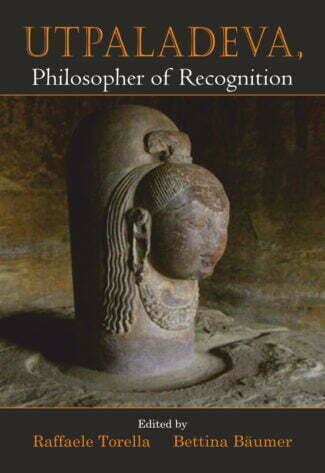
This volume presents the multifarious aspects of Utpaladeva, not only an outstanding metaphysician and epistemologist, engaged in a strenuous critical dialogue above all with the Buddhist logicians, but also one of the most extraordinary mystical poets of India. For the first time his contribution to poetics and aesthetics has been duly highlighted.
The book, which partly derives from the papers offered at the first International Seminar on Utpaladeva (IIAS, Shimla 2013), is the first ever attempt at presenting a comprehensive portrait of one of the most important philosophers of premodern India, so far mainly taken into account as a mere predecessor of the great Abhinavagupta. Recent studies by R. Torella and others have shown the central importance of Utpaladeva in the elaboration of the Pratyabhijna philosophy, and reduced the role of Abhinavagupta to that of his brilliant commentator.
The contributors to the present volume have shown the multifarious aspects of Utpaladeva, not only an outstanding metaphysician and epistemologist, engaged in a strenuous critical dialogue above all with the Buddhist logicians, but also one of the most extraordinary mystical poets of India. For the first time his contribution to poetics and aesthetics has been duly highlighted.
The book contains two appendices with the critical edition and translation by R. Torella of fragments from Utpaladevas long commentary (Vivriti) on his Ishvarapratyabhijna-karika and Vritti, one of the most important works of Indian philosophy as a whole, so far deemed to be totally lost.
This book should generate great interest among scholars of Sanskrit and philosophy for its uniqueness and should serve the curiosity of each and every scholarly reader of Kashmir Shaivism.
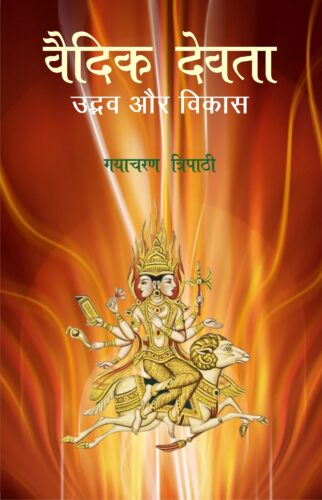
Present book presents interesting and authentic details of almost all promient Vedic gods, about their conceptions, their most ancient forms, their orderly evolution, and about their evolved personalities.
There have been quite a few attempts to delineate the nature and character of Vedic Deities on the basis of Vedic Samhitas by European scholars like Macdonell, Hillebrandt, Oldenberg, Luders and, of late, by Oberlies, etc. However, none of these scholars has made attempt to trace the subsequent development of their character and personalities through the later Vedic texts, epics and the Puranas, etc., whereas it goes without saying that the concept of Hindu gods today in the minds of the people is exactly the one which we encounter in the Puranas and in the folk literature.
This obviously means that the personalities of the Vedic Deities did not freeze with the end of Vedic literature but continued to develop in later period as well through the subsequent literarary activities. Taking rather vague clues from the Vedic texts, the authors or narrators of the Puràõas, augmented and supported by folk beliefs, further expanded, modified and developed the personalities of these gods so that, for the most part, the intangible character of these gods acquired a concrete shape and form, a body of flesh and blood, so to say.
The book tries to trace the historical development of the personalities of Vedic Deities through the subsequent Vedic literature, as well as the epics and the Puranas till they acquire the shape and form in which they are conceived and venerated today.
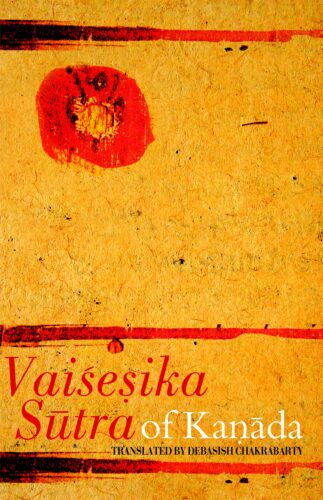
This book presents a lucid English translation of the Vaisesika-Sutra of Kanada, termed the earliest exposition on physics in Indian philosophy and the textual basis for the Nyaya-Vaisesika and Navya-Nyaya systems of thought. The translation retains the feel of the original sutras even while conveying the intended meaning accurately and with clarity.
Kanadas Vaisesika Sutra, the textual basis for the Nyaya-Vaisesika system and the later Navya-Nyaya system, may be termed the earliest exposition on physics in Indian philosophy. It presents one of the earliest discussions on the idea of atomicity and on the true nature of knowledge as comprising the categories of dravya (substance), guna (attribute), karma (action), samanya (generality), visesa (particularity) samavaya (inherence) and abhava (non-existence). This book presents the original Sanskrit text of the Vaisesika Sutra along with its Roman transliteration and a translation in the English language. The lucid translation is a scholarly attempt to retain the feel of the original sutras while conveying the intended meaning accurately and is easy to comprehend owing to many special features. Additional words are added in the translated text for the benefit of syntax but they are placed in parenthesis. The translated text has sub-titles that aid in simplifying the arguments by grouping the sutras. Besides, footnotes are provided to explain technical terms and concepts in the original Sanskrit. The book, published under the Shastra Group of Centre of Linguistic and English at Jawaharlal Nehru University which had earlier brought out the Yogasatra of Patanjali, will prove useful to all researchers and students of ancient Indian philosophy.
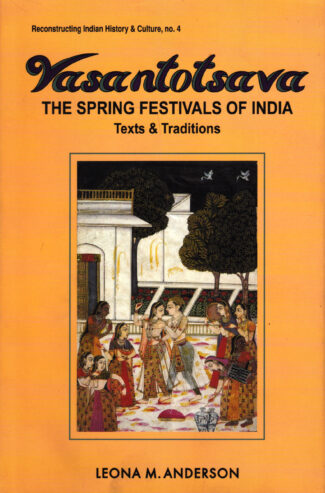
This study treats Vasantotsava as a thematically unified generic whole embracing a range of spring festivals, pansectarian in character and incorporating various rituals. It reassesses Sanskrit texts to explore the rituals, symbols and underlying motifs of the Vasantotsava.
This study treats Vasantotsava as a thematically unified generic whole embracing a wide range of spring festivals including the Phalgunotsava, Caitrotsava, Phalgu, Madhutsava, Madanamahotsava, Madanatroydashi, Anangotsava, Madanadvadaishi, Kamotsava, Shripancami, Yatramahotsava, and Holaka (Holi). These festivals are pansectarian in character and incorporate a variety of ritual observances practised through- out the Indian subcontinent. Signifying the termination of winter and announcing the advent of spring, the celebration was a diverse and complex spectacle situated within the framework of Indian ritual and myth. On the basis of puranic and ritual texts, folk tales, drama, poetry, and narratives in mixed prose and poetry (campus), Dr. Anderson addresses complex issues of indigenous ritual, mythology, and tradition. The Vasantotsava incorporates a broad spectrum of human concerns: in the sphere of polity, it can be turned to account to celebrate and reinforce the power of the king; in the social sphere, it is a time of revelry and merry-making indicative of the annual renewal in human affairs; and in the sphere of religion, it celebrates the exploits of the gods and establishes a link between human and divine actions and events.
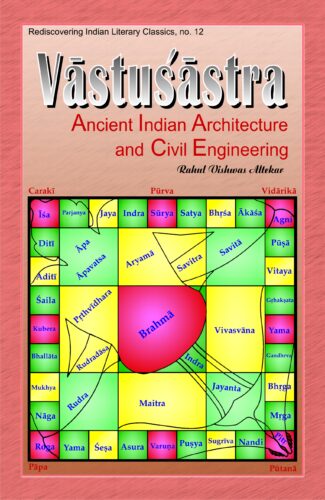
Examining vàstu÷àstra’s conceptual roots in øilpa÷àstra and its later evolution, the volume analyses technical aspects of vàstu÷àstra by concentrating on the essential elements (aïgas) of vàstu÷àstra which involve decision-making and actual construction methods, art of engineering and role and responsibilities of engineers, and aspects related to land materials and rituals associated with use of building after its construction
Though there has been considerable interest in vastushastra in recent times and the orientational aspects of vastushastra have been often discussed, little is known of the essential elements that constitute This small book, written in a simple and lucid style, contains teachings of great men, gleanings from the scriptures, and examples from the epics and Puranas, and suggests easy solutions to the various problems faced by man in the present-day world of violence, wars, killings and disasters, and how to have a holistic approach to life vastushastra and its scientific application in the present day. Based on extensive research, the work, vastushastra attempts to address this aspect. Examining comprehensively the subject of vastushastra: its conceptual roots in Shilpashastra and its later evolution as dealt with in the Vedas, the Epic literature, Arthashastra, literature on ayurveda and Kamasutra literature, the volume analyses technical aspects of vastushastra by concentrating on the essential elements [angas] of vastushastra which involve decision-making and actual construction methods, art of engineering and role and responsibilities of engineers, and aspects related to land materials and rituals associated with use of building after its construction. It discusses the eco-friendly life style of the ancient Indians based on vastushastra principles. Giving minute attention to details, it focuses on the application of vastushastra in the present-day society — how the vastushastra principles can be scientifically applied and the potential of application of vastushastra keeping in view modern trends in architectural science and civil engineering.
The book will be useful for students and scholars of architecture and engineering and those interested in vastushastra.

Examining vàstu÷àstra’s conceptual roots in øilpa÷àstra and its later evolution, the volume analyses technical aspects of vàstu÷àstra by concentrating on the essential elements (aïgas) of vàstu÷àstra which involve decision-making and actual construction methods, art of engineering and role and responsibilities of engineers, and aspects related to land materials and rituals associated with use of building after its construction
Though there has been considerable interest in vastushastra in recent times and the orientational aspects of vastushastra have been often discussed, little is known of the essential elements that constitute This small book, written in a simple and lucid style, contains teachings of great men, gleanings from the scriptures, and examples from the epics and Puranas, and suggests easy solutions to the various problems faced by man in the present-day world of violence, wars, killings and disasters, and how to have a holistic approach to life vastushastra and its scientific application in the present day. Based on extensive research, the work, vastushastra attempts to address this aspect. Examining comprehensively the subject of vastushastra: its conceptual roots in Shilpashastra and its later evolution as dealt with in the Vedas, the Epic literature, Arthashastra, literature on ayurveda and Kamasutra literature, the volume analyses technical aspects of vastushastra by concentrating on the essential elements [angas] of vastushastra which involve decision-making and actual construction methods, art of engineering and role and responsibilities of engineers, and aspects related to land materials and rituals associated with use of building after its construction. It discusses the eco-friendly life style of the ancient Indians based on vastushastra principles. Giving minute attention to details, it focuses on the application of vastushastra in the present-day society — how the vastushastra principles can be scientifically applied and the potential of application of vastushastra keeping in view modern trends in architectural science and civil engineering.
The book will be useful for students and scholars of architecture and engineering and those interested in vastushastra.

All the philosophers of Vedànta have resorted to reason in their attempts to reconcile the reality of Brahman with that of the world of empirical experience. This book traces the philosophical development of Vedànta starting from Badaràyaõa to Sri Aurobindo and critically evaluates their arguments and positions.
The problem of reconciliation of mutually incompatible Upanishadic statements on some of the basic problems has attracted the attention of almost all the major philosophers of Vedanta. One such problem is about the nature of relationship between Brahman and the world of empirical experience. And in their attempts to reconcile the reality of Brahman with that of the world of empirical experience almost all the philosophers of Vedanta have resorted to reason. They have not only tried to provide rational justification for their positions and views but have also used reason freely in analyzing and criticizing the rival positions and views. In this process several arguments which are subtle and cogent are developed. However, some of the Vedantins who have shown critical spirit and acumen in understanding and criticizing the rival arguments and positions are not so critical about their own arguments and positions. Thus the Vedantins who came after Shankara have made his position (advaita) their major purvapaksha without, however, trying to make their own positions a possible purvapaksha. This is an attempt to trace the philosophical development of Vedanta starting from Badarayana to Sri Aurobindo, and to understand and evaluate critically their arguments and positions.
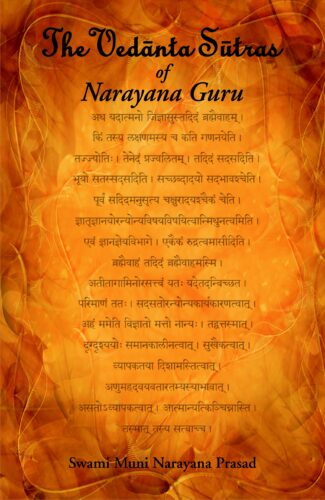
The Vedanta Sutras of philosopher-poet Narayana Guru has 24 beautifully-fluent sutras revealing the essential message of the Vedanta. The highly-perceptive commentary by Swami Narayana Prasad elucidates the gurus interpretation of the Vedantic concept.
Indias wisdom, one may say, attained its maturity in the Vedanta the end or culmination of veda (knowledge). Vedanta may be seen as the finest fruit on the tree of Indias wisdom, for it brings the seeker that ultimate knowledge that ushers in the gift of self-fulfilment (ananda). Over the centuries, brilliant saint-scholars like Shankara, Ramanuja, Madhva have interpreted the Vedanta in different ways. The philosopher-poet Narayana Guru belongs to this class of noted exponents of the Vedanta. And his Vedanta Sutras is a masterpiece in his attempt to restate the original Upanishadic teaching of non-dual Reality his most succinct expression of that message. This book presents these sutras along with a highly-perceptive commentary that elucidates the Gurus interpretation of the Vedantic concept in a brilliant style. Narayana Gurus Vedanta Sutras reveal the essential message of the Vedanta in 24 beautifully-fluent sutras. His simple and direct revaluation and restatement of the Vedanta, in general, has been found to be comprehensive and contemplative in its insight, reconciling the superficial disagreements of the Vedantic schools and restoring the pristine vision of the Upanishadic sages. In this scientific age, his work has often been acclaimed for its relevance. His Vedanta Sutras, compact yet profound in manner, is yet another example of this. The thoroughly-engrossing commentary of Swami Muni Narayana Prasad is a unique effort. Its hallmark is his clear avoidance of exegesis with greater reliance on his personal conviction. Swami Muni Narayana Prasad places Narayana Guru on par with the sutrakaras like Badarayana, Jaimini, Gautama and Kanada with this beautiful elucidation.

This book, typed afresh, presents a phonetic survey of Vedic sounds, offering explanatory accounts of Vedic sandhi-system, declension, conjugation, indeclinable words, nominal stem formation and syntax. It is the first ever most authentic, linguistic material of the Rgveda.
Here is a key to unlock the oldest treasury of mankinds wisdom: Vedic literature not just the metrical language of its hymns, but also the prose pieces of the Brahmanas/Brah-mana-like writings: whether from the Atharva or the Yujurveda. Setting forth a comprehensive phonetic survey of Vedic sounds, the author: an eminent Orientalist of yester years, offers lucid explanatory accounts of Vedic sandhi-system (euphonic combination), declension, conjugation, indeclinable words, nominal stem formation and, finally, of its syntax with numerous illustrations. At the base of Macdonells Grammar is the first ever, yet the most authentic, linguistic material of the Rigveda supplemented, though, it is from other Samhitas as well. Also marked here are the grammatical forms of the Brahmanas where they differ from those of the later-day classical Sanskrit. Now reprinted afresh in an innovative format, this book has sustained its decades-long worldwide importance as an undisputed, systematically organised aid to the study of Vedic literature. And, for sure, retains its indispensablity to scholars even today!
| There are no products |